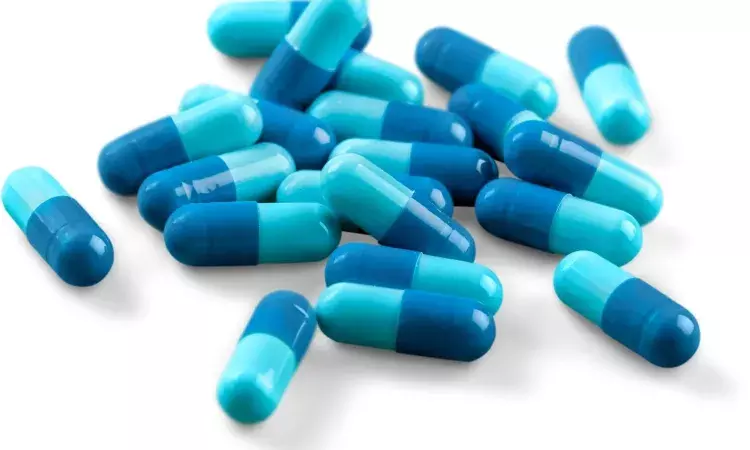- Home
- Medical news & Guidelines
- Anesthesiology
- Cardiology and CTVS
- Critical Care
- Dentistry
- Dermatology
- Diabetes and Endocrinology
- ENT
- Gastroenterology
- Medicine
- Nephrology
- Neurology
- Obstretics-Gynaecology
- Oncology
- Ophthalmology
- Orthopaedics
- Pediatrics-Neonatology
- Psychiatry
- Pulmonology
- Radiology
- Surgery
- Urology
- Laboratory Medicine
- Diet
- Nursing
- Paramedical
- Physiotherapy
- Health news
- Fact Check
- Bone Health Fact Check
- Brain Health Fact Check
- Cancer Related Fact Check
- Child Care Fact Check
- Dental and oral health fact check
- Diabetes and metabolic health fact check
- Diet and Nutrition Fact Check
- Eye and ENT Care Fact Check
- Fitness fact check
- Gut health fact check
- Heart health fact check
- Kidney health fact check
- Medical education fact check
- Men's health fact check
- Respiratory fact check
- Skin and hair care fact check
- Vaccine and Immunization fact check
- Women's health fact check
- AYUSH
- State News
- Andaman and Nicobar Islands
- Andhra Pradesh
- Arunachal Pradesh
- Assam
- Bihar
- Chandigarh
- Chattisgarh
- Dadra and Nagar Haveli
- Daman and Diu
- Delhi
- Goa
- Gujarat
- Haryana
- Himachal Pradesh
- Jammu & Kashmir
- Jharkhand
- Karnataka
- Kerala
- Ladakh
- Lakshadweep
- Madhya Pradesh
- Maharashtra
- Manipur
- Meghalaya
- Mizoram
- Nagaland
- Odisha
- Puducherry
- Punjab
- Rajasthan
- Sikkim
- Tamil Nadu
- Telangana
- Tripura
- Uttar Pradesh
- Uttrakhand
- West Bengal
- Medical Education
- Industry
Antibiotic-free hydrogen peroxide e-bandages treat wound infections

Washington, D.C: According to new research by investigators at the Mayo Clinic and Washington State University, e-bandages could be an effective alternative to antibiotics for managing wound infections. The findings are presented at ASM Microbe 2022, the annual meeting of the American Society for Microbiology.
In a recent study conducted in mice, novel hydrogen peroxide producing bandages with electrical/chemical properties (electro-chemical bandages or e-bandages), under the control of wearable voltage devices, reduced methicillin-resistant Staphylococcus aureus (MRSA) biofilm bacteria present in the wound by 99 percent after 2 days of treatment.
In people with wound injuries, typical management includes cleaning the wound using various solutions – including hydrogen peroxide, applying antiseptic creams or ointments, and at times, administering antibiotics. If wounds do not heal, they may progress to a chronic wound stage which can be especially tough to manage.
Research has shown that chronic wounds often harbor biofilms (communities of microorganisms living together attaching to surfaces). Bacteria present in such biofilms can thrive and resist the effects of antibiotic treatment, which is why they are difficult to treat even with prolonged antibiotic treatment. Prolonged use of antibiotics can result in selection of antibiotic-resistant bacteria. The presence of biofilms in wounds also delays wound healing; biofilm-harboring wounds are common in patients who are older in age, diabetic or immuno-compromised.
"Wound infections are common and can be challenging to treat. Thus, it is important to develop new strategies, technologies and treatment regimens that do not rely on antibiotics," said lead study author Yash S. Raval, Ph.D., Senior Research Fellow, Division of Clinical Microbiology at the Mayo Clinic in Rochester, Minn.
Hydrogen peroxide solution is used to clean wounds. Although hydrogen peroxide has antibacterial and wound healing properties, hydrogen peroxide solution is unstable chemically and therefore, its effects are short-lived. Dr. Raval and colleagues have developed e-bandages to continuously produce hydrogen peroxide as a treatment of wound infections
"Specifically, we have developed and examined antibacterial properties of a novel kind of bandage which continuously produces hydrogen peroxide through application of a specific negative voltage," said Dr. Raval.
In the study, the researchers created wounds on mice and infected them with MRSA to establish wound MRSA biofilms. They then treated infected wounds with the wearable e-bandage system. The hydrogen peroxide-producing e-bandages reduced the bacterial biofilm population by 99 percent.
Dr Kamal Kant Kohli-MBBS, DTCD- a chest specialist with more than 30 years of practice and a flair for writing clinical articles, Dr Kamal Kant Kohli joined Medical Dialogues as a Chief Editor of Medical News. Besides writing articles, as an editor, he proofreads and verifies all the medical content published on Medical Dialogues including those coming from journals, studies,medical conferences,guidelines etc. Email: drkohli@medicaldialogues.in. Contact no. 011-43720751


